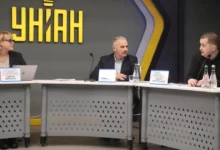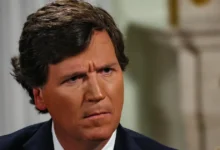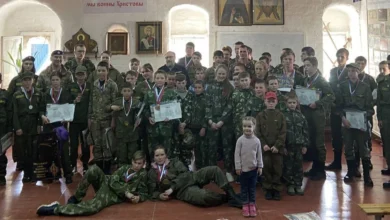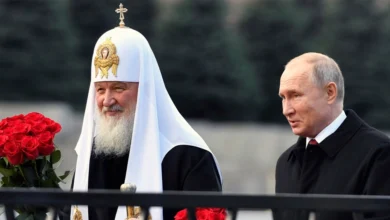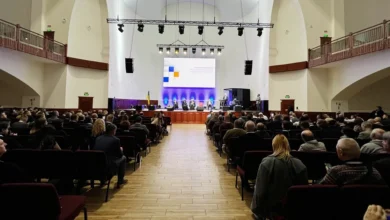How Russia Turns Religion into a Tool of Influence Across Post-Soviet States
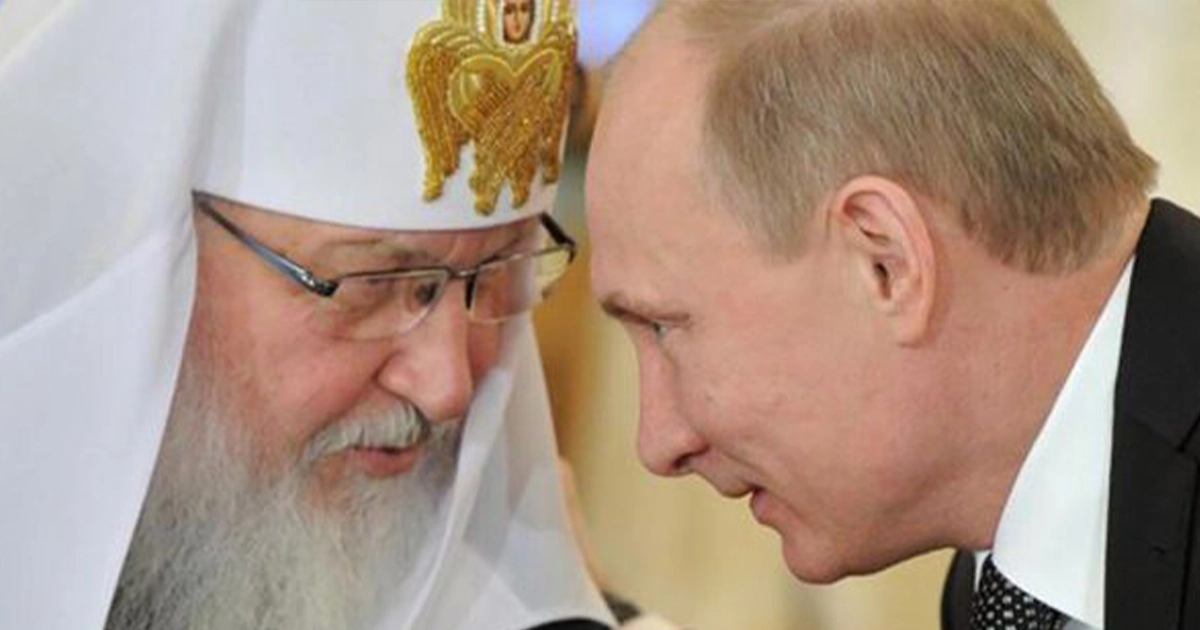
Russia has long used religious institutions as instruments of hybrid influence across the former Soviet Union — from Ukraine and Moldova to the Baltic states and the South Caucasus. Experts discussed the mechanisms of this influence, along with strategies for resistance, during an international roundtable in Kyiv on October 31, 2025, titled “How the Russian Federation Uses Religion to Influence Post-Soviet States.” The event was organized by the Accent Charity Foundation and the “Amber Road” initiative.
Source: Argument
Religion as a “Moral Shield” for Russian Intelligence Services
Participants emphasized that since the collapse of the Soviet Union, Moscow has systematically built a policy of influence through the religious sphere.
Unlike political or civic institutions, churches often enjoy automatic moral credibility in many societies:
“People assume priests cannot lie.”
Russian intelligence services have weaponized this trust, creating a “window of opportunity” for deploying agents under religious cover.
The Russian Orthodox Church (ROC) and the Moscow Patriarchate remain central to this strategy. Yet Moscow also works through Muslim organizations and other religious structures, adjusting its tactics to the context of each country.
Ukraine: The ROC as an Ideological Arm of the “Russian World”
Experts reminded listeners that the 2022 full-scale invasion was preceded by decades of Russian subversive activity, in which the religious sphere played a crucial role.
Through institutions officially belonging to the Moscow Patriarchate in Ukraine — which presented themselves as the “canonical” Orthodox Church — Russia spread narratives designed to undermine Ukrainian identity.
At the same time, Moscow sought to discredit the formation of an independent Ukrainian Orthodox Church. The autocephalous Orthodox Church of Ukraine (OCU) was branded as “schismatic,” a message promoted by ROC networks across global Orthodoxy. Though this failed to stop the OCU’s establishment, it significantly slowed the process.
Today, the ROC in Russia functions essentially as a state institution that:
provides ideological support for the Kremlin and the doctrine of the “Russian World”;
blesses the war against Ukraine as a “holy struggle”;
mobilizes society for military service;
assists in suppressing Ukrainian identity and expelling the OCU from occupied territories.
Where Russia maintains control, OCU communities face persecution, closures, and displacement.
In response, Ukraine has introduced lawful measures to limit Moscow’s influence, including recognizing affiliations between local structures and banned Russian religious centers. Meanwhile, Kremlin-connected oligarchs such as Vadim Novinsky have tried to portray Ukraine in the West as a country that “persecutes Christians.”
Moldova: The Church as a Channel for Russian Propaganda
Andrei Andrievschi, editor of AVA.MD, presented the Moldovan case, where the ROC remains one of Russia’s most powerful instruments of influence.
He recalled that the modern ROC emerged as a Soviet-loyal institution. After the mass repression of the 1920s, Stalin revived the Patriarchate as a tool under full state control, with many clergy recruited by the security services — a pattern that continues today.
Moldova is home to two Orthodox jurisdictions:
The Metropolis of Moldova (under the Moscow Patriarchate) — the largest network of parishes, including in separatist Transnistria.
The Bessarabian Metropolis (under the Romanian Orthodox Church), legally registered after a 2002 European Court of Human Rights decision.
In recent years, parishes have slowly begun transitioning from Moscow to the Romanian jurisdiction, despite intense pressure.
Narratives promoted by pro-Moscow clergy in Moldova include:
claims of exclusive “canonical legitimacy”;
accusations of “persecution of Orthodoxy”;
legitimization of pro-Russian political actors;
disinformation portraying European integration as a threat to “traditional values.”
Risks include politicization of believers, societal division, exploitation of Transnistria as a platform for influence, and damage to Moldova’s international reputation.
Proposed countermeasures include:
transparency in church finances;
a “Church and Politics” code of ethics;
grants for social service projects free from political agendas;
structured state-church dialogue to reduce dependency on Moscow.
The Baltics: Latvia’s Legal Strategy to Reduce Moscow’s Influence
Eduards Liniņš of Latvian Radio analyzed the Baltic context. In all Baltic states, the Moscow Patriarchate remains Russia’s primary lever of influence — though responses vary.
Estonia has hosted both Moscow- and Constantinople-aligned Orthodox jurisdictions since the 1990s.
Lithuania’s small Orthodox community has increasingly distanced itself from Moscow.
Latvia undertook an unprecedented legal step.
In 2022, President Egils Levits introduced legislation declaring the Latvian Orthodox Church (LOC) “independent and autonomous” from any foreign religious authority. Parliament passed the law urgently as a matter of national security.
Formally, LOC became independent — though canonically the situation remains unresolved, since only churches can grant autocephaly. Moscow objects, and Constantinople has not formally recognized LOC.
Liniņš highlighted that:
state involvement in religion was a necessary move for national security;
Moscow lost direct administrative control but still maintains influence through individual clergy;
unresolved canonical status poses future challenges, but politically the move strengthened Latvia’s sovereignty.
The South Caucasus: Between State Survival and Hybrid Warfare
Volodymyr Kopchak, head of the South Caucasus Office of the Center for Army, Conversion and Disarmament Studies, outlined how Russia uses religious influence in Azerbaijan, Georgia and Armenia.
Tools of Russian influence include:
ROC dioceses and clergy linked to the security services;
infiltration into national churches;
support for pro-Russian groups and anti-Western narratives.
Effectiveness depends heavily on each state’s counterintelligence and political will.
Azerbaijan strictly limits the ROC’s activity. It cannot evolve into a political instrument and serves primarily Russian-speaking residents.
Georgia faces high risk: parts of the Georgian Orthodox Church promote pro-Russian messages. After Patriarch Ilia II’s eventual departure, internal conflict is expected to deepen.
Armenia experiences tension between the state and the Apostolic Church, with some clergy involved in pro-Russian revanchist initiatives.
Main lesson: successful resistance requires firm government action, intelligence work, and support from Western partners.
The Muslim Dimension: “Muftis of Russia” and Pseudo-Structures in Occupied Territories
Ukrainian military chaplain Said Ismagilov described Russia’s use of Muslim organizations in Ukraine and occupied territories.
Before 2014, Moscow:
created pro-Russian religious administrations;
installed loyal imams and muftis;
financed and incentivized cooperation.
After the occupation of Crimea, several such structures quickly shifted allegiance to Russia. In Donbas, where legitimate Muslim leaders refused collaboration, Russia created pseudo-muftiates to represent “Muslims of the occupied regions.”
In 2022–2023, occupation authorities even formed a “Spiritual Administration of Muslims of Novorossiya,” entirely controlled by Russian security services.
Simultaneously, Russia:
redistributed mosques to loyal religious figures;
issued “warrior’s prayer books” justifying aggression;
developed a “military imam” system to bless the war.
Muslim groups within Ukraine that previously had close ties to Russia now often adopt a neutral public stance (“we pray for peace”), which in practice mirrors the rhetoric of the Moscow Patriarchate.
What Comes Next: Key Conclusions and Recommendations
Participants from multiple countries agreed on several core principles:
1. Religion is a full-scale front in Russia’s hybrid war.
This includes not only Orthodox structures, but also Muslim and other religious communities.
2. Documentation of abuses is essential.
Blessings of aggression, collaboration, and propaganda should be legally documented for Ukrainian and international accountability.
3. The state cannot remain “completely neutral” when religion is used as a weapon.
This is not about theology — but about national security: transparency of funding, limiting foreign influence, intelligence work, and supporting religious communities committed to freedom and human dignity.
4. Civil society and churches must work together.
Religious communities, journalists, experts, and rights advocates are uniquely positioned to expose manipulation — but this requires partnership and trust.

